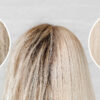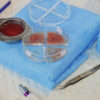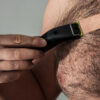Baldness is a serious problem that is affecting more and more patients – and this is true regardless of gender or age. The condition not only causes significant hair loss, but is also a cause of shame or withdrawal. There can be many reasons for this phenomenon – from genetic conditions to skin allergies. This is why it is so important to see a trichologist and dermatologist at the first sign of excessive hair loss. Based on a medical history and visual inspection of the affected areas, specialists can make an accurate diagnosis and incorporate effective treatment.
What are the causes of baldness?
Hair loss is a problem of complex etiology. The cause of this phenomenon can be both external and intrinsic factors, such as hormonal disorders, chronic stress, psychological trauma or vitamin deficiency. Very often in one patient several causes combine to initiate hair loss. If you’re losing them in excessive amounts, don’t wait until they exceed the textbook 100 per day. You need to see a dermatologist who specializes in trichoscopy, or a trichologist as soon as possible.
Direct causes of baldness thus include:
- Conditions such as anemia, hormonal disorders, scalp conditions.
- Improper diet – a low-calorie diet can lead to weakened hair follicles and stunted hair growth cycle.
- Taking certain medications.
- Genetic Determinants.
What are the types of baldness?
The most common types of baldness include:
- Male pattern androgenetic alopecia – one of the most common causes of hair loss. Its typical feature is the gradual loss of hair from the temples. Patients affected by this ailment have small hair curves on the top of the head. As time passes, they get deeper and deeper, until all that remains is a narrow strip of hair on the sides and back of the head. The cause of this type of baldness is excessive production of dihydrotestosterone. This results in the slow atrophy of the hair follicles. The hair on the belt around the head does not have DHT-sensitive receptors, so its follicles do not atrophy. Treatment for this type of condition involves the administration of substances that inhibit the increased activity of the α-reductase enzyme or a hair transplant.
- Female androgenetic alopecia – the cause is too much male hormones or too little female hormones. Hormonal imbalance results in hair loss in the parietal and frontal regions. Around the temples and in the line of the forehead, a strip of approx. 2 cm.
- Alopecia areata – is associated with hair loss in certain areas. A distinction is made between the so-called. bald patches on the head. With the passage of time, there is even a complete loss of hair.
- Menopausal alopecia – occurs in women during menopause, when there is a decline in estrogen. These hormones accelerate the hair growth cycle, while a decrease in these hormones causes an increase in androgens that can cause rapid hair loss.
- Postpartum alopecia, which can appear 3 – 6 months after delivery. The body then regulates by itself the hormone levels disturbed during pregnancy. Excess estrogen during pregnancy inhibits the hair dying phase. After childbirth they fall out, but after a few months the condition returns to normal, and the hair grows back normally.
- Psychogenic alopecia – it occurs under the influence of excessive stress. Then irregular foci of hairless skin appear.
“Specific types of alopecia are treated differently, which is why it is so important to diagnose and determine why excessive hair loss is occurring. The dermatologist or trichologist conducts a detailed interview with the patient about his or her general health, medications taken and medical events. In addition, tests may be ordered to rule out anemia and elemental deficiencies. Based on the information gathered, the doctor diagnoses the cause of the baldness and selects a course of treatment” highlights dermatologist MD, Ph.D. Katarzyna Osipowicz.
What is trichoscopy?
Trichoscopy is an advanced, state-of-the-art form of diagnostics that can assess the condition of the scalp and hair. It can help find the cause of hair loss or the formation of lesions on the skin. This field greatly facilitates the selection of treatment and avoids performing more invasive tests. It provides an opportunity to determine the condition of all layers of the epidermis, dermis and subcutaneous tissue.
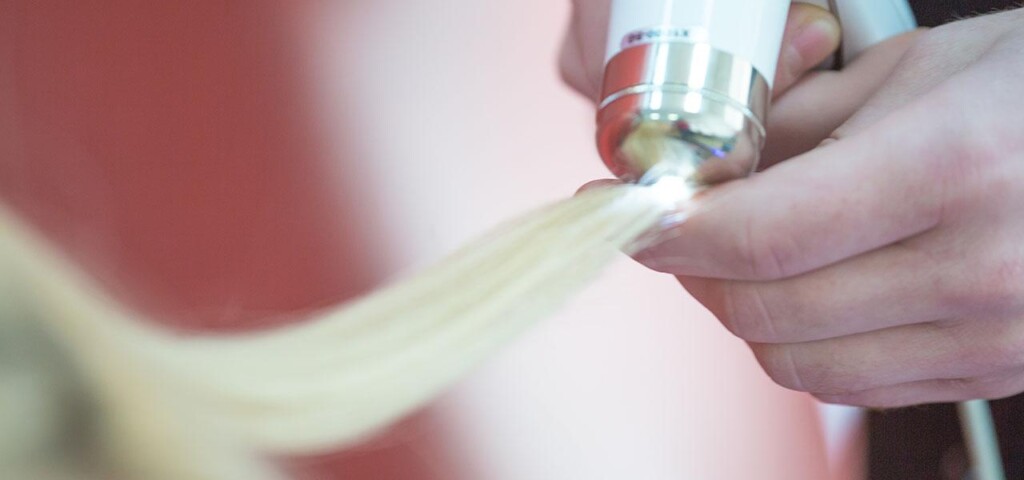
With the help of trichoscopic examinations, it is possible to determine precisely whether hair is falling out or perhaps breaking in a specific area. This is very difficult to see during other trichological studies.
Why visit a trichologist and dermatologist during baldness?
Trichology is a young but rapidly growing field of science. It is the trichologist, in consultation with a dermatologist, who will help take care of the hair and find the source of the problem, instead of just fighting its effects. A comprehensive approach to the health of the hair and scalp gives specialists the opportunity to choose the right care and determine indications or contraindications for appropriate treatment procedures. Doctors may recommend treatments such as:
- Dr. Cyj Hair Filler – the world’s first peptide product for the treatment of baldness. The substance promotes hair regrowth and stops the process of hair loss. It contains seven specialized and innovative peptides. They are combined with stabilized hyaluronic acid. They stimulate microcirculation of the scalp and nourish weakened hair follicles.
- Carboxytherapy of the scalp – the treatment uses carbon dioxide. It involves the application of this gas to the subcutaneous tissues, using a special device. As a result, the vessels have better blood supply and oxygenation. This, in turn, is associated with nourishment of the scalp and with slowed hair loss.
- Mesotherapy of the scalp with stem cells and platelet-rich plasma – PRP plasma is concentrated platelets. They are suspended in blood plasma, which is obtained by drawing blood from the patient. Plasma is rich in active ingredients and, above all, very natural for humans. Among other things, it includes. substances and growth factors that are essential for repairing hair structures. Plasma is obtained by double centrifugation of substances that are the morphotic elements of blood. During centrifugation of blood taken from the patient immediately before the procedure, red blood cells and white blood cells are separated from platelets.
- Triamcinolone scalp injection and DCP therapy – DCP is a type of contact allergen that causes skin irritation at the application site. The result is an allergic reaction. The immune system recognizes this allergen and sends white blood cells in that direction to fight the inflammation caused by the administered substance. At the same time, they stimulate the hair follicles. As a result, the hair stops falling out. For isolated outbreaks of alopecia areata, triamcinolone is also administered, which has a strong anti-inflammatory effect and relieves the symptoms of sensitization.
- HL Hair mesotherapy – a highly regarded formulation with a complex composition that has more than 50 carefully selected active substances – vitamins, fatty acids, flavonoids and antioxidants., amino acids, hyaluronic acid or DNA sodium.
- FUE hair transplant – a modern method that allows to transport hair follicles from the donor area to the balding areas. Combined with the DHI technique, it allows full control over the depth, direction and angle of the growing hair. During the procedure, a small pinpoint needle is used, with which micro-punctures are made in the form of so-called “micro-punctures”. punches. This reduces the risks associated with hair damage.
- Scalp micropigmentation – modern medical tattooing in the fight against baldness. The end result looks very natural and gives the impression that the head is covered with just-grown hair. Thus, the treatment helps create the illusion of hair.
- Oxygen infusion – involves the introduction of high molecular weight oxygen into the deeper layers of the skin using high pressure. Oxygen is concentrated to 96%.
- Dermapen – a versatile device for needle mesotherapy. It is equipped with a system of pulsating needles that facilitate the delivery of active substances deep into the skin. It brings the desired results for all types of baldness.
How does a scalp examination with a trichologist go?
Trichoscopy is the application to the patient’s scalp of a head that displays an image on a computer screen. The equipment allows the skin to be viewed at up to 100x magnification, and photos of the examination can be taken and saved. This greatly facilitates diagnosis. The first phase of the study involves a visual inspection of the scalp. The trichologist then applies an immersion fluid with a specific refractive index. It allows to change the resolution capacity of the test equipment.
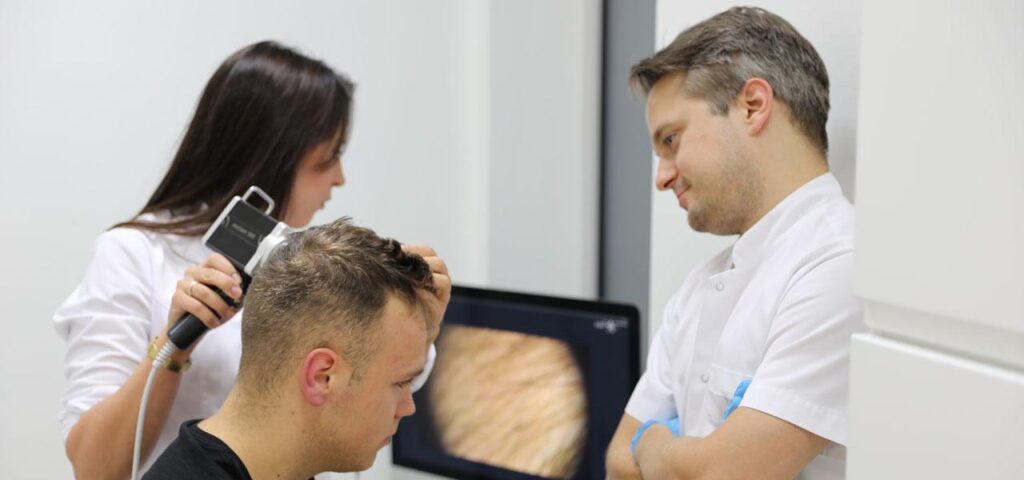
When evaluating the scalp, the trichologist pays particular attention to lesions, but the condition and amount of hair, or hair follicles, can also be determined with a dermatoscope. The images that are taken during trichoscopic examinations are sent for analysis. The results are presented in the form of a report, which includes information about the study, the number of hairs and their diameter.
